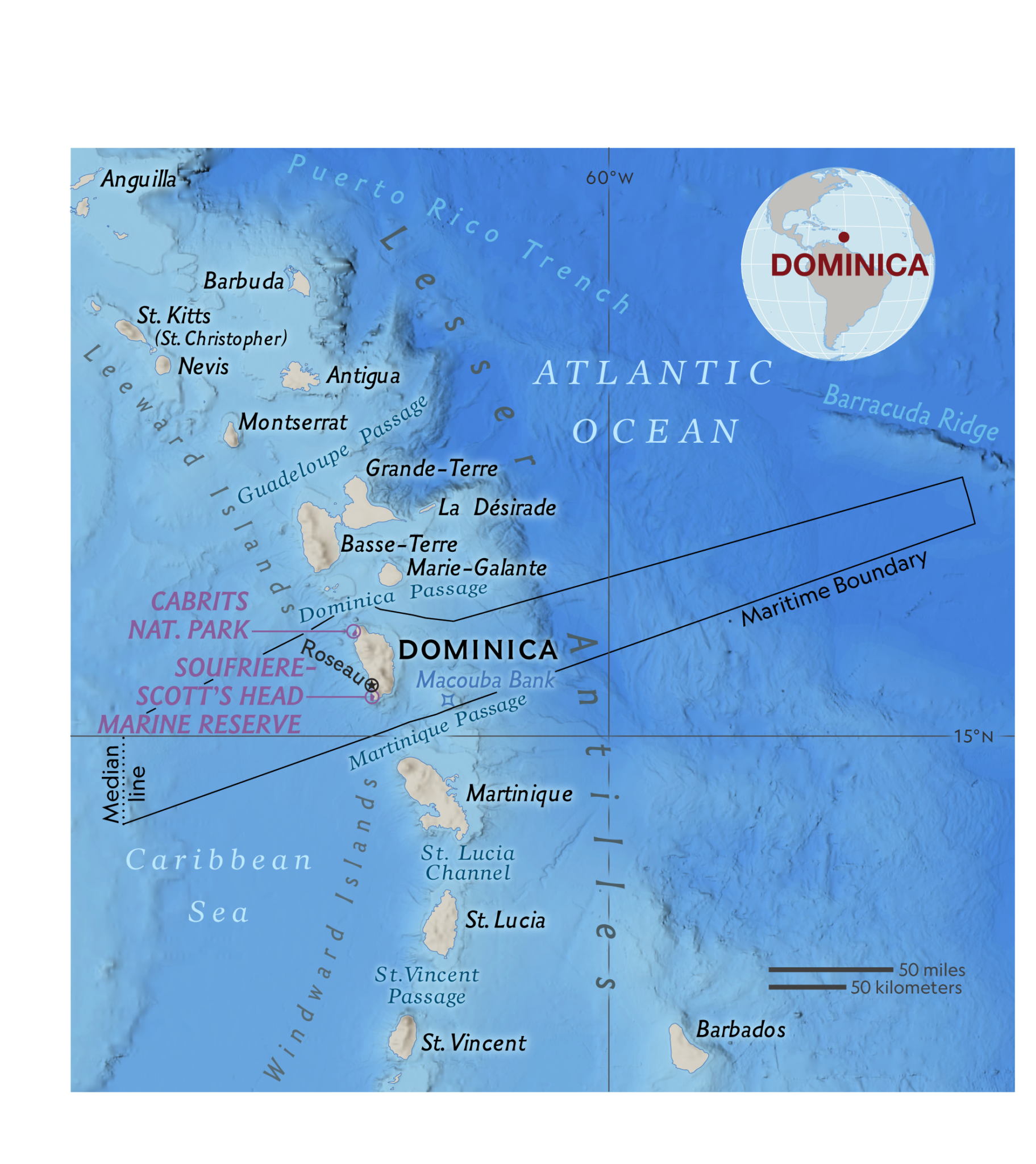Dominica
At Sea: November – December 2022
The Place
Dominica is a volcanic island located in the Lesser Antilles archipelago in the Caribbean Sea.
In the sea, Dominica’s Exclusive Economic Zone (EEZ) covers 28,552 km2 and shares boundaries with the neighboring French territories of Martinique to the south and Guadeloupe to the north. Also known as “the Nature Island,” Dominica boasts a rugged mountain terrain with waterfalls, rivers, and geothermal hot springs, and is covered by lush forests. Because of its unique environmental features, the Caribbean side of Dominica provides a critical habitat for sperm whales to feed on deep squid, reproduce, and raise their calves. Marine environments, including coral reefs, seagrass beds, and pelagic waters, support a growing tourism industry that seeks leisure and recreation activities such as yachting, scuba diving, whale watching, and sport fishing. However, Dominica’s natural resources are highly vulnerable to the effects of global warming. After experiencing the catastrophic impacts of Hurricane Maria (2017) as well as increases in temperature, rainfall, and flooding, Dominica committed to becoming the world’s first climate resilient nation.

The Mission
In support of Dominica’s commitment to becoming the world’s first climate resilient nation, National Geographic Pristine Seas partnered with the Government of Dominica to conduct an expedition to survey the diversity and condition of its marine environment, as well as produce a scientific report and documentary film. In addition, Pristine Seas partnered with Dynamic Planet to conduct an economic analysis of the value of Dominica’s marine environment and to assess the potential economic and ecological gains if Dominica implements stronger marine conservation policies reconciling production and protection.
From November to December 2022, the Pristine Seas team used the vessel BVI Aggressor to survey sites surrounding the island – from the nearshore reefs and seagrass beds to the deep ocean and offshore areas. Nearshore, the team surveyed the Soufriere-Scott’s Head Marine Reserve, Cabrits National Park, and unprotected sites around the island.


Members of Project CETI’s Dominica Marine Conservation Fellowship participated in the expedition to share knowledge with the field team and gain exposure to the expedition’s research methods, activities, and roles. In addition, Project CETI helped co-lead and organize an in-person Explorer Classroom learning session for youth in Dominica, sharing information about the expedition as well as Project CETI’s research and Fellowship program. Project CETI, a National Geographic program and non-profit based in Dominica, is an interdisciplinary project which aims to decipher sperm whale communications. Project CETI’s team is made up of a diverse group of scientists including linguists, roboticists, engineers, marine biologists, artificial intelligence experts, and underwater acousticians from over 15 research partner institutions.
Photo credits: Manu San Félix, Martin Gamache (map), Manu San Félix (2)